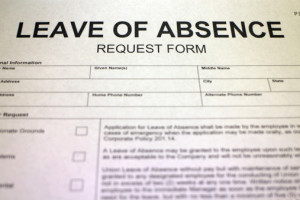 The entitlement to parental leave was introduced in the United Kingdom 1999 and provides birth and adoptive parents – and anyone else with parental responsibility – with the right to take leave to care for a child’s welfare.
The entitlement to parental leave was introduced in the United Kingdom 1999 and provides birth and adoptive parents – and anyone else with parental responsibility – with the right to take leave to care for a child’s welfare.
Caring for a child can be anything from spending more one-to-one time with them, settling a child into a new routine, or even looking at new schools. In addition, unless agreed otherwise, parental leave is unpaid.
If an employee qualifies, they can take up to 18 weeks leave per child. Therefore, if they have two children, they can take up to 36 weeks of parental leave. Both parents have separate entitlement which cannot be transferred unlike shared parental leave, where the right is exchangeable.
Parental leave changes. Up until now, parental leave could be taken at any time prior to a child’s fifth birthday, before the fifth anniversary of the date of the child being placed in cases of an adopted child, or before their 18th birthday if the child has a disability. Effective April 5, though, employees will be able to take parental leave at any time before a child’s 18th birthday.
Eligibility for parental leave. The removal of the five-year age limit is the only amendment to be made to parental leave in April 2015. An employee must still complete at least one year of continuous service in order to qualify for parental leave.
They also have to continue to make a request to their employer, providing 21 days’ notice of the start date of their parental leave. An employer can ask for this request in writing, as well as evidence of the following:
- The child’s birth certificate
- Papers confirming the child’s adoption or date of placement
- The disability living allowance awarded to the child
As prior notice is required, the nature of parental leave does not help families deal with emergencies involving a child.
The leave must be taken in blocks or multiples of a week, rather than single days off unless agreed otherwise or the child is disabled. There is no entitlement to take parental leave for less than one week, where one week is determined by an employee’s working pattern. An employee can also not take more than four weeks leave for any individual child in a year.
Employees are protected to the extent that they must not suffer any detriment for requesting parental leave or while they are on parental leave.
Implications for temporary workers. This change does put temporary workers at a disadvantage, as it is unlikely that they will be able to comply with the eligibility requirements in most cases.
But there are options for those who don’t qualify, such as:
- Taking paid holiday
- Requesting unpaid time off work
- Requesting a flexible working pattern
For employees and temporary workers who find that they need to take time off at short notice due to an emergency, there are also the following routes:
- Request emergency leave
- Arrange time off for the care of the child
Employees and temporary workers have a right to take a reasonable amount of unpaid time off work in order to deal with certain emergencies regarding the people that they care for. Known as time off for dependants, this can be taken regardless of how long a person has worked for their employer.
Next steps for businesses. If they haven’t already, employers should look to review and amend their staff policy or handbook to make sure that it complies with the changes being made to parental leave.






